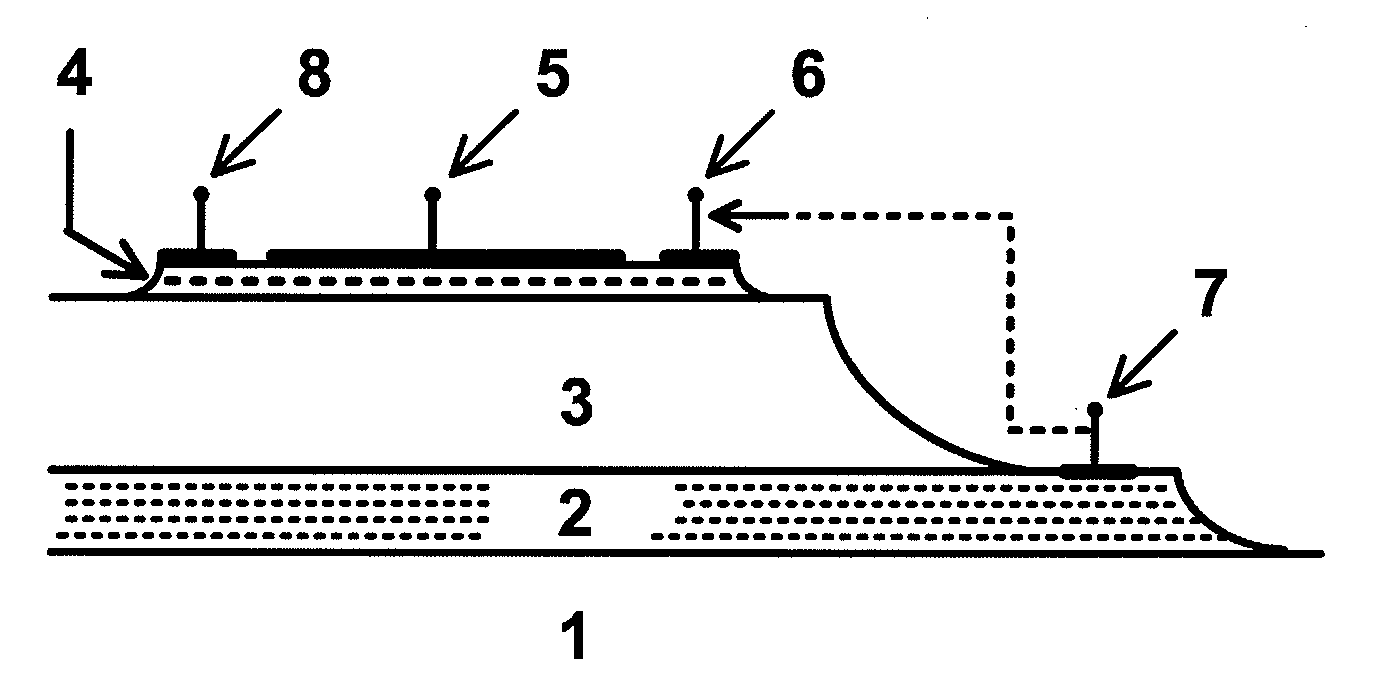Method to reduce excess noise in electronic devices and monolithic integrated circuits
a monolithic integrated circuit and electronic device technology, applied in the field of electric devices, can solve the problems of limiting the low-frequency performance of sensors and amplifiers working at or near zero frequency (dc), and the ubiquitous nature of silicon microelectronics, and the problem remains unsolved
- Summary
- Abstract
- Description
- Claims
- Application Information
AI Technical Summary
Benefits of technology
Problems solved by technology
Method used
Image
Examples
example 1
[0018]FIG. 2 shows an optimized application of the method of FIG. 1 for its use with semi-insulating GaAs substrates that allows to have regions with isolated devices with very good performances at high frequencies (11) and other regions (10) with very low excess noise devices protected by this invention, dedicated to local oscillator and mixing functions, all in the same monolithic integrated circuit (IC). The layer structure could be obtained easily starting from a semi-insulating GaAs substrate (1) where an initial p-type implantation or diffusion (2) would be done in those regions where the low excess noise resistors and transistors will be fabricated (note that a resistor has the same structure of the FET whose cross section appears in FIG. 1, if the gate terminal (5) is not fabricated and the Source (6) and Drain (8) terminals are used as the resistor's terminals). In this way we would obtain the screen-layers (2) under the low excess noise devices. The depth of said diffusion...
example 2
[0020]FIG. 4 shows the electrical cross section of many electrical devices having an inner conductive channel of a given resistance Rch surrounded by a neighbour conductor going in a roundabout way (14) to the former but isolated from it, that by Electrostatic laws forms a capacitor C surrounding the inner channel. The electrical geometry of FIG. 4 appears in many electronic devices going from a simple coaxial cable to a more sophisticated conducting filaments as the microwires and nanowires under active research today. From today's knowledge on excess noise, the resistance Rch of the inner channel when driven by the continuous (dc) current Id will allow to obtain a voltage V on the resistance Rch that will show a dc term given by Ohms Law: Vdc=Id×Rch and two small noise terms (ac) and (ac′), one being the thermal noise of the resistance Rch also known as Johnson noise and the second being a term not satisfactorily explained up to now that is the excess noise appearing for enough Id...
PUM
 Login to View More
Login to View More Abstract
Description
Claims
Application Information
 Login to View More
Login to View More - R&D
- Intellectual Property
- Life Sciences
- Materials
- Tech Scout
- Unparalleled Data Quality
- Higher Quality Content
- 60% Fewer Hallucinations
Browse by: Latest US Patents, China's latest patents, Technical Efficacy Thesaurus, Application Domain, Technology Topic, Popular Technical Reports.
© 2025 PatSnap. All rights reserved.Legal|Privacy policy|Modern Slavery Act Transparency Statement|Sitemap|About US| Contact US: help@patsnap.com



